All about the pedunculate oak
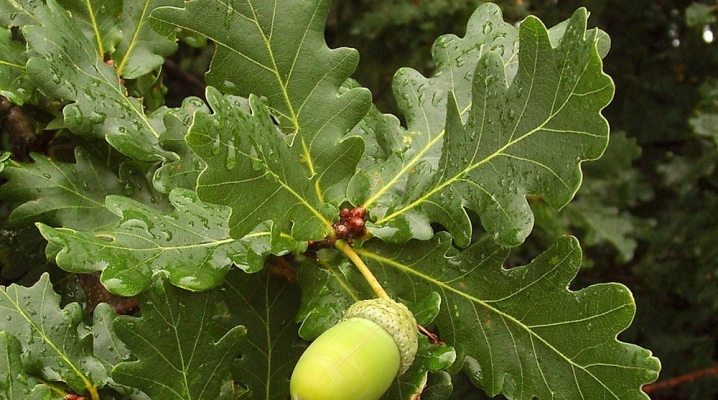
For many centuries and even millennia, among different peoples, the oak has been a symbol of something important - wisdom, strength, tranquility, or even the personification of the gods themselves on earth. This tree is perhaps the most frequently encountered in various works of the great classics. About what he is like in a more familiar light to us, as well as about his biological "portrait" read in this article.
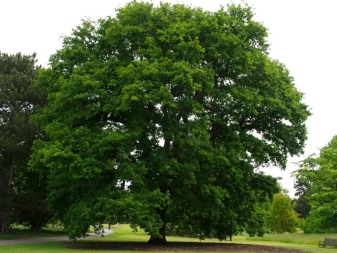
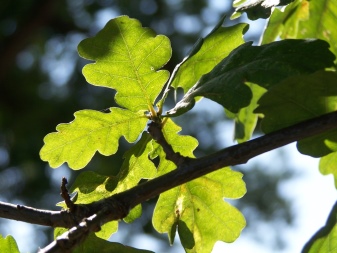
Description
The life form of the common oak is a tall, deciduous tree with a large and wide trunk. It is also called English oak, English oak or summer oak. It belongs to the beech family of the oak genus, the name in Latin is Quercus robur. The species is included in the Red Data Book with the mark “causing the least concern”. This characteristic means that the plant is widespread and is a thriving species.
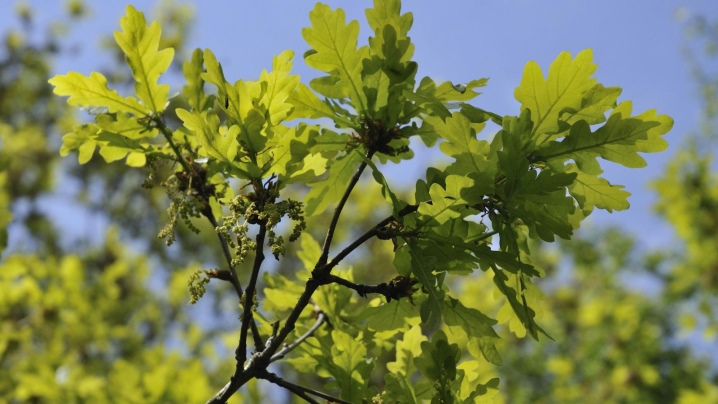
Young trees have an irregular stem, but over time it becomes symmetrical and cylindrical.
The tree can grow from 20 to 40 meters in height. The color of the bark is black-gray, the bark itself covers the trunk with a thick layer (the average thickness of the bark is 10 cm).
Cracks characteristic of oak bark appear only by the age of 20 or 30. The peculiarity of the tree is its long stalks, thanks to which it acquired its name "petiolate".

Speaking about the morphological description, it should be noted right away that the flowering of the tree occurs at the end of spring and ends at the beginning of summer. Flowering duration - no more than 10 days. The flowers of the oak are dioecious. Male flowers are green, sometimes yellow, small (about 0.5 cm) and flat, located on earrings 2 to 4 cm long. Female flowers have a reddish tint and are collected in inflorescences of 2 or 3 flowers. At the same time, women are located higher than men. The oak leaf is dark green, yellow or brown in autumn. The shape of oak leaves familiar to many from childhood is called obovate, the leaves have 5 or 7 lobes. Length - 10-15 cm.
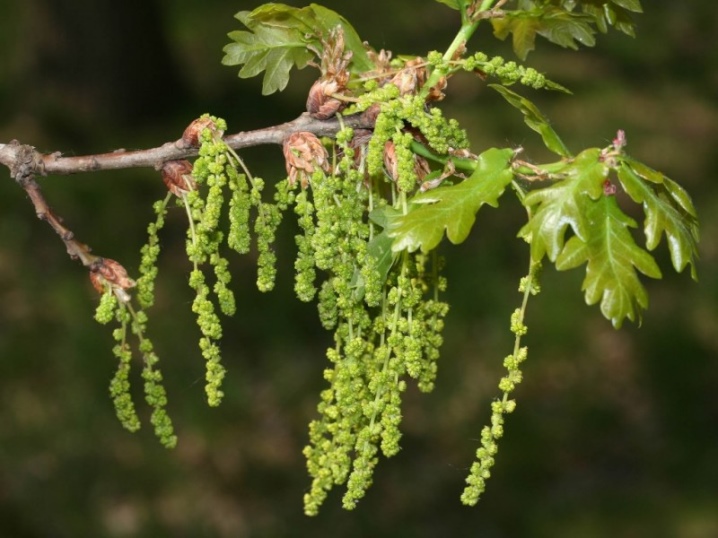
The root system includes a long taproot and lateral roots that begin to appear in the 6th or 8th year.
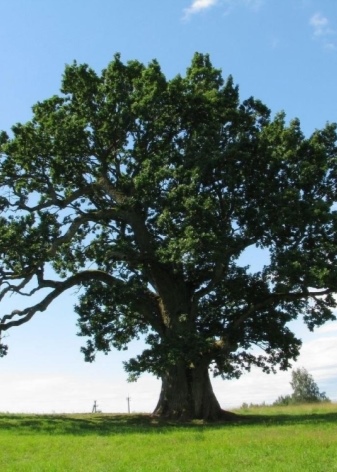
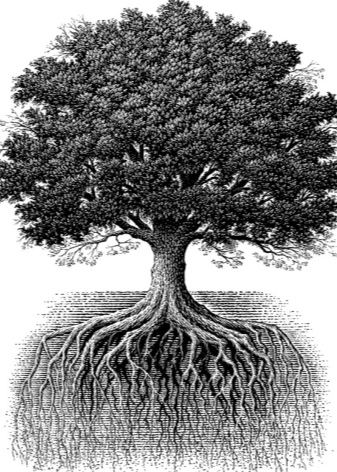
The average lifespan of such an oak is about 400 years, but some specimens can live up to 2000 years. For half of its life cycle, the tree grows in height, then its crown diameter increases only slightly.
To date, the largest oak diameter is 13 meters.
On average, the growth rate per year of a young oak in the first 20 years of its life is 30 cm, and every year it becomes wider by 20 cm.
Botanical taxonomy includes 4 subspecies. We will talk briefly about some varieties below.
Interesting fact. In 2015, the genome of an oak tree was deciphered in France. The oak genome contains 50 thousand pairs of genes.
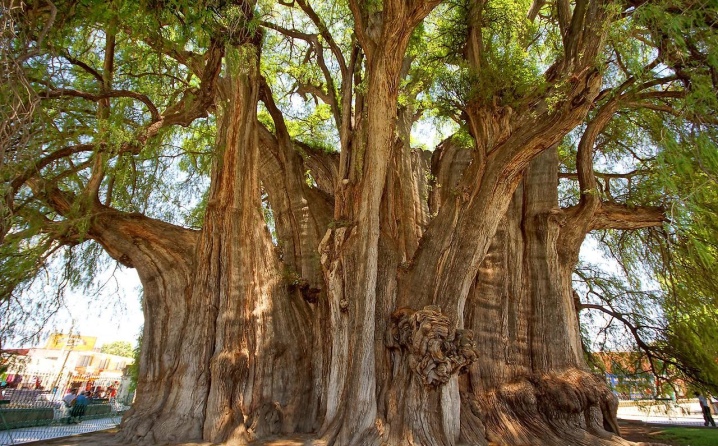
Spreading
The main habitat of English oak is Western Europe and the European part of the Russian Federation. Oak also grows in western Asia and northern Africa. The climate suitable for the growth of the tree is Mediterranean, temperate and subtropical.

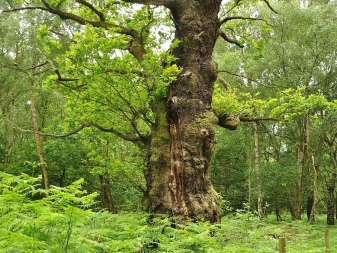
This type of oak was introduced (deliberately bred) in the northeastern part of North America. The Crimea, the Caucasus and Europe are considered the homeland of the common oak.
It is found in many places - on stony (calcareous) soils of mountains, on forest soils (loams), on alkaline soils of steppes, in floodplains of rivers on ordinary chernozems. It tolerates drought well due to the fact that the root system goes deep into the soil.
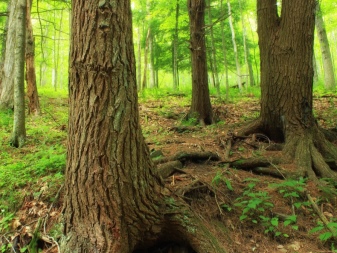
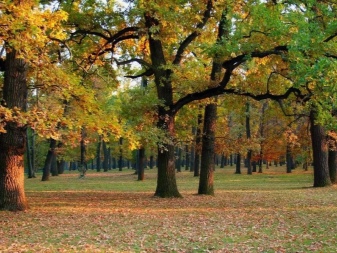
Popular varieties
This type of oak has two ecological races - summer and winter. The first species begins to bloom in a timely manner and profusely. Produces more fruits than the winter species. Most of these trees have a smoother trunk.
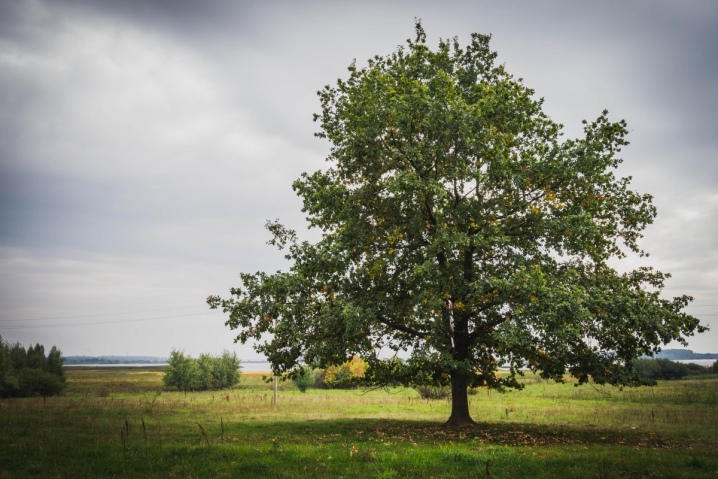
The second species begins to bloom later than the first for a couple of weeks. Produces fewer flowers and fruits. However, it has more durable wood and is less susceptible to pests. The features of both subspecies are preserved in their descendants.

A subspecies of ordinary oak - red oak - has become very famous.
It got its name from the leaves, which, being bright green in summer, turn into different shades of red in the fall.
Often planted in parks and squares. The average tree height is 15 meters, the trunk width is 15 to 20 meters. It is unpretentious to growing conditions, tolerates frosts well.
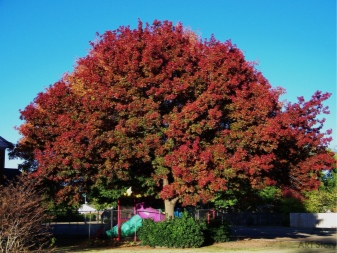

Another variety of this type of oak, which should be noted, is Fastigiata. It is also called the pyramidal oak. Such trees create very beautiful alleys and a living fence due to their elongated shape. The average height is 30-40 meters. The crown of such oak trees is relatively small - only 3 or 4 meters. In terms of growing conditions, they are moderately demanding - they can grow in many types of soils. They are able to withstand temporary droughts, flooding and increased soil salinity.

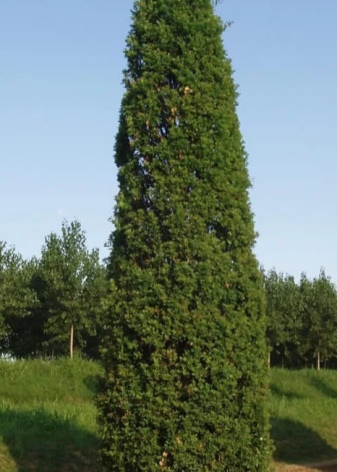
Similar to this variety is a variety called "Fastigiata Koster". It is in many ways similar to the previous one in terms of environmental requirements and also resembles thuja in appearance.
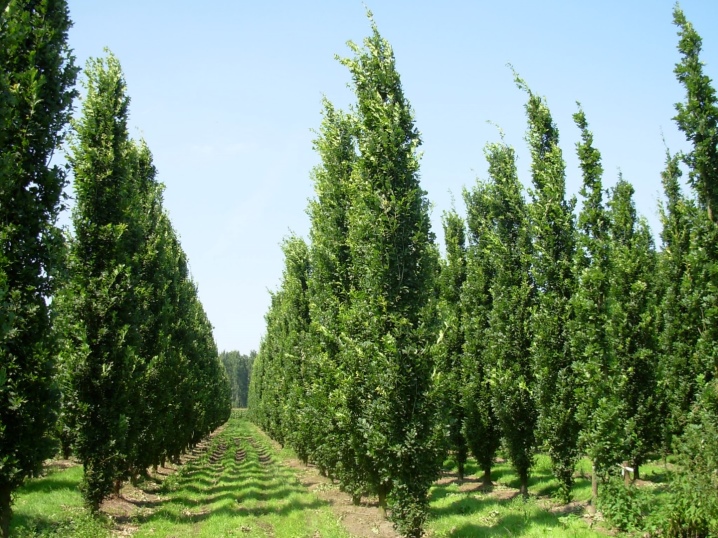
Planting and leaving
As already mentioned, the tree is not capricious and can take root in many varieties of soils. But it mainly grows on loams, fertile and moist soils. Does not tolerate prolonged flooding. Grows poorly in acidic soil, prefers neutral or alkaline. Oak is planted along the edges of ravines - its root system prevents the erosion of the pit walls.
It tolerates the presence of winds, can grow in rather windy areas. But it does not grow in areas where sea breezes are raging.
We tolerate low levels of pollution. It can grow near areas where enterprises producing chemical concentrates are located.

The attitude towards light is ambiguous. Poorly tolerates the lack of light at the top, but tolerates the lack of light at the sides. The exception is seedlings - their formation can occur in conditions of inaccessibility of sunlight. But over time, the trees become more and more light-loving. By the age of 50, some oak species in oak forests begin to shade others, which ultimately leads to the fact that the oak forest becomes less populated by oak trees. Only a few giants remain.
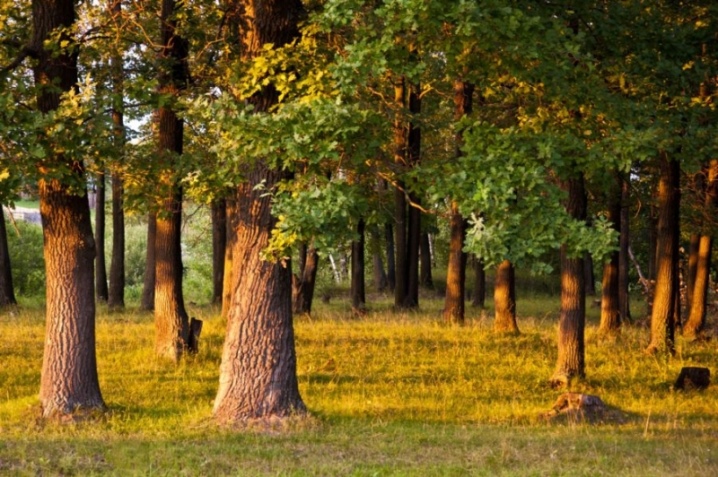
Planting oak (acorn) seeds is widespread. Usually acorns are harvested in the fall and planted in the fall, less often they are planted in early spring after long-term storage in a damp and dark place. The seeds are planted in holes 6 cm deep. It usually takes 1 to 2 years for seedlings to germinate. Then they can be transplanted into another soil and let them begin to form their root system. After that, it is better not to replant them, since even in young trees, the root system goes 1 meter deep into the ground. After a couple of years after planting, you can already start cutting the trees to form the future crown.
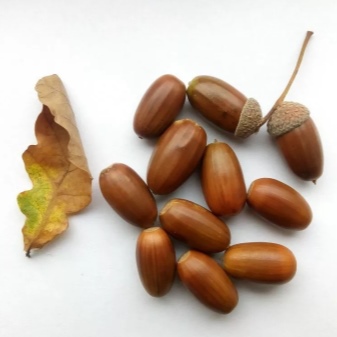
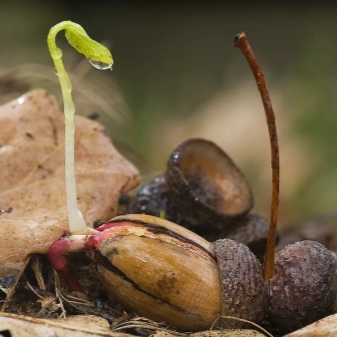
Another method to propagate oak is by cuttings. Cuttings of mature oaks are difficult to root, which cannot be said about cuttings of young trees.
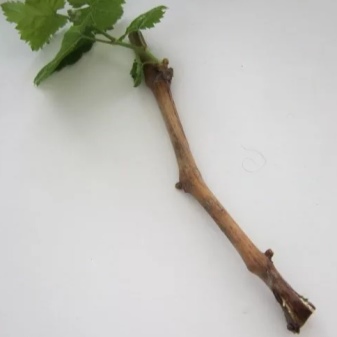
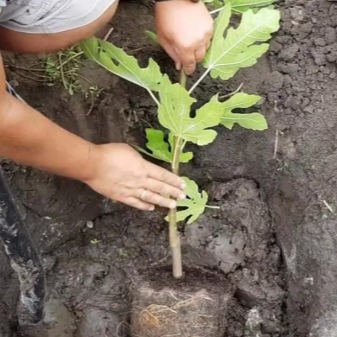
Diseases and pests
Ascomycete (marsupial mushroom) is considered the main pest of not only the pedunculate oak, but also of many other species. The fungus is related to yeast and has a porous head. The disease is characterized by spotting, the leaves on such a tree begin to wither.

Another attack is transverse cancer. On trees, transverse growths are formed, which are the habitat of pathogens - the bacteria Pseudomonas quercus.The bark at the site of growths grows, swells, cracks, leaving the trunk open and accessible to other bacteria or pests. Often, almost half of all trees in oak forests become infected.
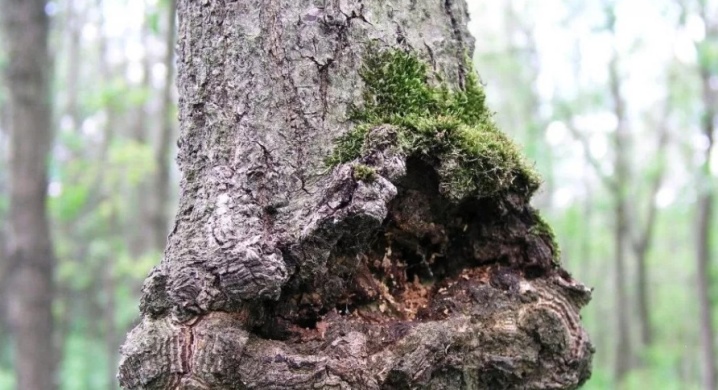
Sometimes trees also suffer from powdery mildew, yellow tinder fungus.
Enters into a symbiotic relationship with the porcini mushroom.
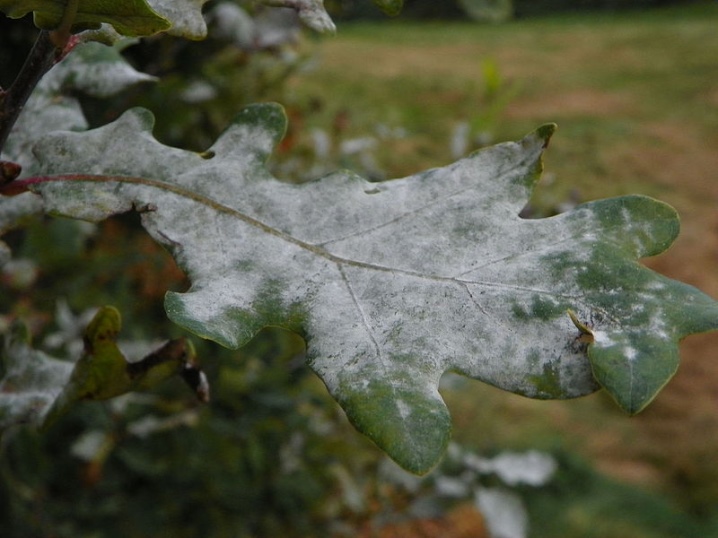
Usage
The oak was known and revered by ancient peoples. The Greeks and Romans considered this tree a gift from the gods, and it was not allowed to damage it in any way. The oak branch was considered a sign of the god Apollo - the patron saint of arts and sciences. It was recognized that this tree was one of the first to appear on earth. The use of oak took place already in those days - distinguished soldiers were awarded with oak branches. In Russia, at the foot of the large sacred oak trees, various events were held - weddings, courts and other important gatherings.
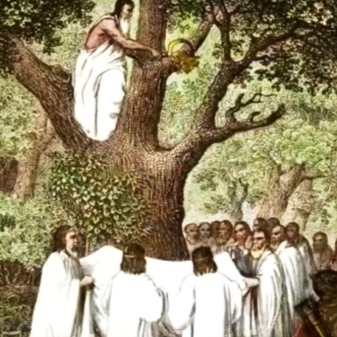
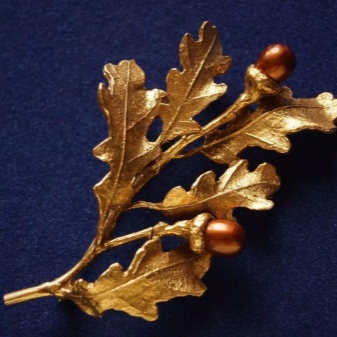
Oak fruits - acorns are used as raw materials for food. However, they contain a substance that is toxic to humans - quercetin. For many animals, it is not harmful - they can eat the acorns raw.
Quercetin breaks down when roasted and can also be washed out of acorns.
Other substances that make eating acorns more difficult are tannins. They give the product a bitter taste. One way to get rid of them is to rinse the acorns. However, another method of cleansing acorns was usually used - in the spring they dug up already sprouted acorns, which had been in the ground all winter, and eaten them. In general, fried or boiled acorns are packed with nutrients. Crushed acorns are used as a substitute for almonds, and acorn coffee is brewed, and baked goods are baked from acorn flour.
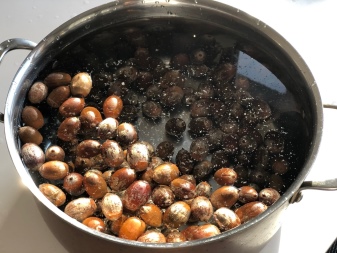
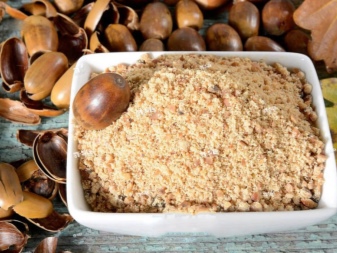
Used for field protection breeding. Quite well known are oak groves (oak forests), which are created for decorative purposes.
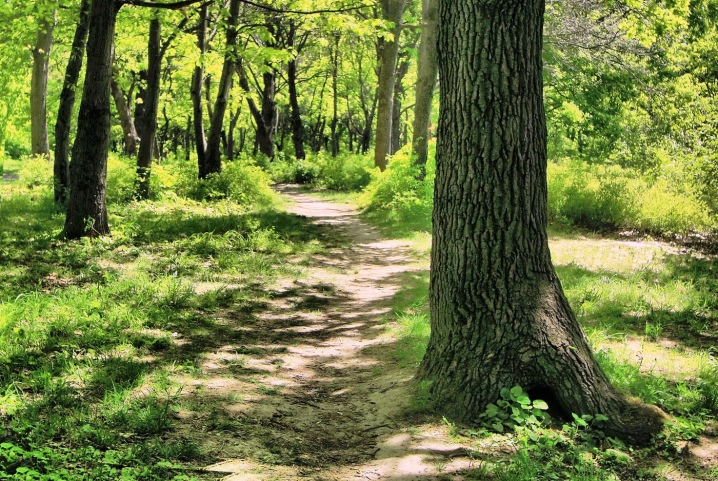
Acorns are a favorite treat of some wild animals, the most famous of which are wild pigs. Some hunters use acorns as bait. For some domestic animals, acorns are toxic - this applies to cows and horses, for sheep - to a lesser extent.
As for oak wood, it is widely used in construction, shipbuilding. Furniture and parquet are made of it. Wood is often used in place of firewood. The use of oak for the manufacture of barrels for storing cognacs and wines is widely known. It is believed that it is this tree that gives alcoholic beverages a peculiar taste.
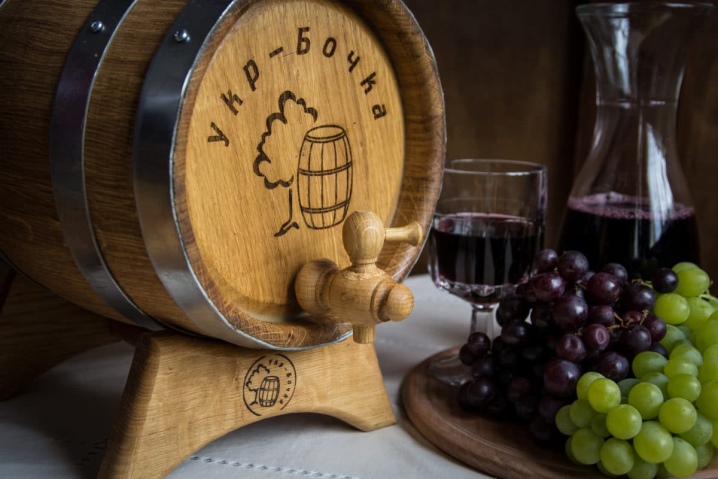
Bog oak, which has lain under water for a long time, is of particular value. It turns black and becomes more resistant to external influences. The tannins contained in the bark of the tree are used to tan leather. A dark and durable dye is obtained from the bark of oak, which is used in the dyeing of fabrics, woolen products, paintings and tapestries.
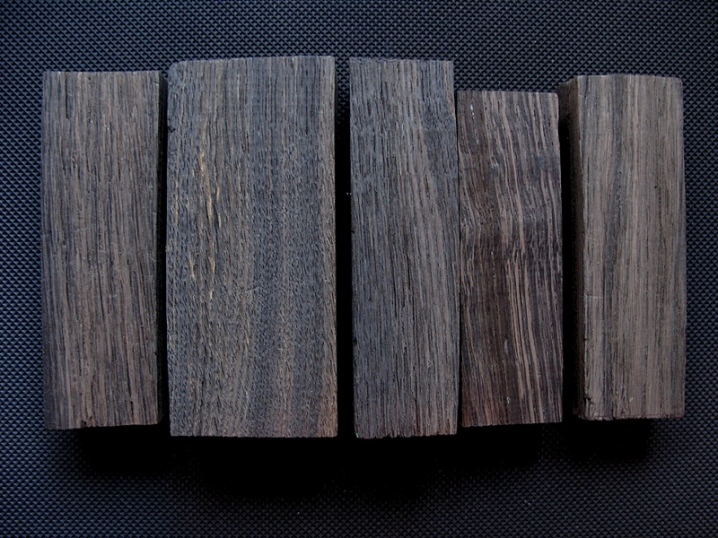
There are many celebrities among the representatives of this type of oak. Their main feature is their considerable age. They are landmarks and are protected by local government agencies.



































































The comment was sent successfully.